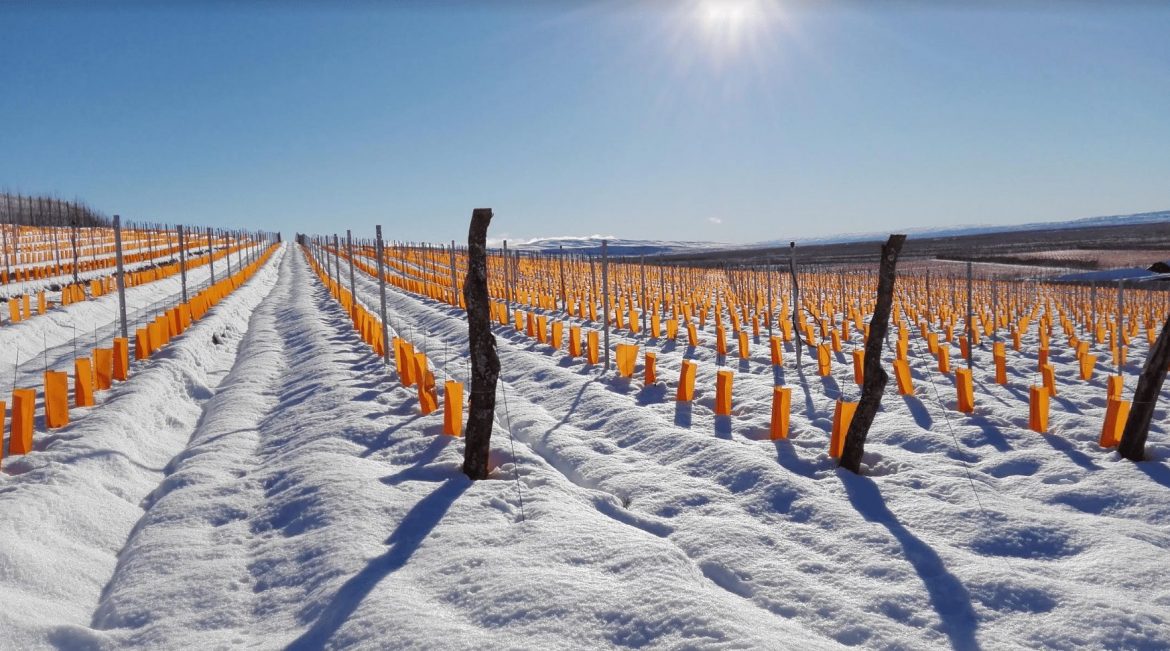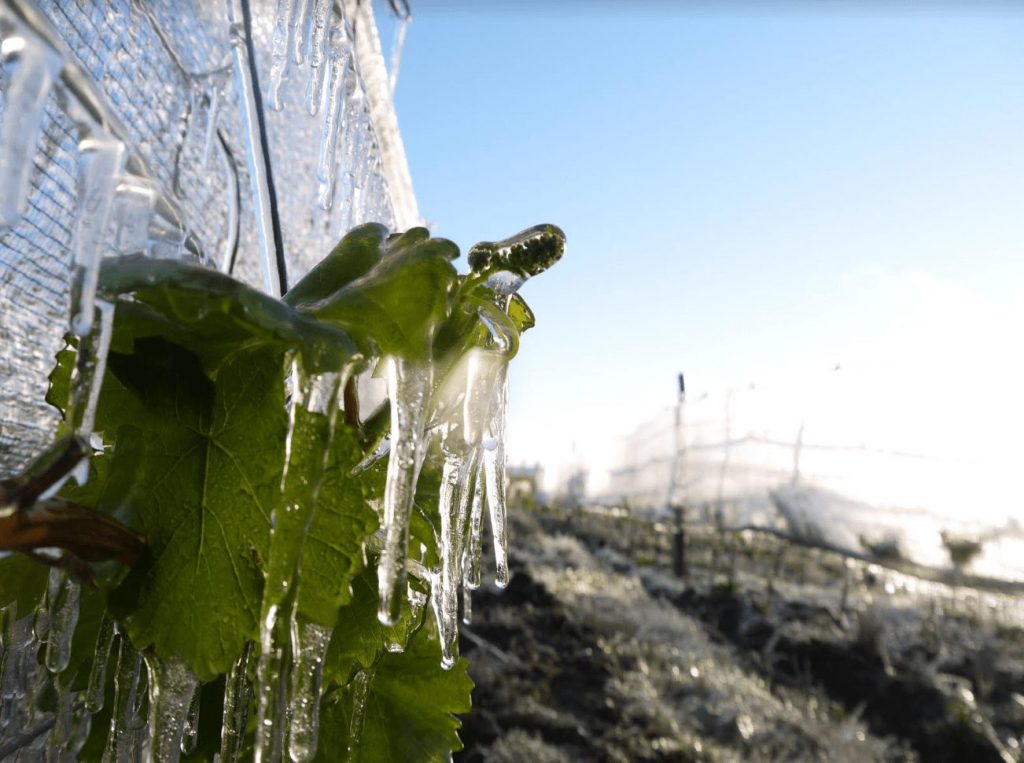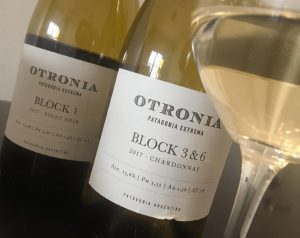The 50-hectare vineyard of wine and oil magnate Alejandro Bulgheroni is located on the shores of Lago Musters in Sarmiento, deep in Argentine Patagonia, and is already producing wines under the Otronia Patagonia Extrema label. At 45.33° S, is this the southernmost vineyard in the world?
The only other commercial vineyards vying for the title are those of Central Otago in New Zealand, most specifically Black Ridge Vineyards in Alexandra who were – until recently – record holders for the southernmost winery and vineyard in the world, at 45.15° S.
There are some experimental vineyards in Los Antiguos in Argentina’s Santa Cruz province, at 46.54° S; and over the border in Chile on the shores of General Carrera lake in Chile Chico also at 46.54° S. However, none of these have produced anything other than small, experimental batches of wine (none of which have been commercial released).
Making wine in the southernmost vineyard in the world
With an extremely continental climate, the summer days are sunny and warm enough to ripen their Pinot Noir, Chardonnay, Gewürztraminer, Pinot Gris and Merlot grapes. However, frequent frosts and fierce winds (up to 100km per hour!) mean this isn’t necessarily the easiest place for grape growing. Sprinklers and nets are used to help protect vines from frost and wind protection respectively.
The site was originally a cherry tree orchard, but in 2011 — after consulting with soil specialist Pedro Parra and consultant winemaker Alberto Antonini — the first vines were planted in 2011. The first wines from the 2017 harvest are now coming to market under their brands Otronia 45 Rugientes and Otronia Block Series.
Otronia Tasting Notes
 Otronia 45 Rugientes, Corte de Blancas 2017
Otronia 45 Rugientes, Corte de Blancas 2017
This blend of Gewürstraminer (62.5%), Pinot Gris (25%) and Chardonnay (12.5%) is a floral and spicy wine with a fresh and bright finish. The wine is aged in both concrete and oak fudres for a year before blending, and the resulting wine is fresh and aromatic.
Otronia Block 3 & 6 Chardonnay 2017
For me this is the wine that is showing best from these younger vines down south. A Chardonnay with character, some structure and killer acidity. This is a leaner style of Chardonnay and 16 months in oak fudres adds a little fat and volume to an otherwise austere wine. Lean and wild with notes of dried herbs, blossom and crushed rocks.
Otronia 45 Rugientes Pinot Noir 2017
This is a blend from different vineyard plots of Pinot Noir and is the simpler version of the two reds. Partially made with carbonic maceration and whole cluster, the main focus here is on fruit expression.
Otronia Block 1 Pinot Noir 2017
Taken from a single block of Pinot Noir, this is a more complex wine (although the vines are still young!) Appetising fresh red fruit notes on the nose with wild brush herb and floral notes. Fresh on the finish with fine tannins and some grip.
Overall impressions of Otronia’s first vintage
These wines are made from young vines in an area with a very extreme climate that has never been planted before. Once you take that into consideration, this first crop of wines is a pretty good representation of the potential of the region – linear wines with delicate, fresh fruit aromas, electric acidity and some savoury complexity too. At this stage, the white wines are more accomplished and the Chardonnay for me is showing best at the moment.
Otronia is definitely worth trying, not only for the kudos of having tasted wines from the southernmost vineyard in the world but also to see the new cool-climate potential and style that is emerging in both Argentine and Chilean Patagonia. The developments at Otronia and in Chubut are definitely worth keeping your eye on.
In fact, I believe Chubut in Argentina and Osorno in Chile have the potential to make some of the South America’s most distinctive wines yet. Give wine producers in these regions five years more of experience and vine age, and I think we’ll have one of the more distinguished regional profiles of this vast continent.


